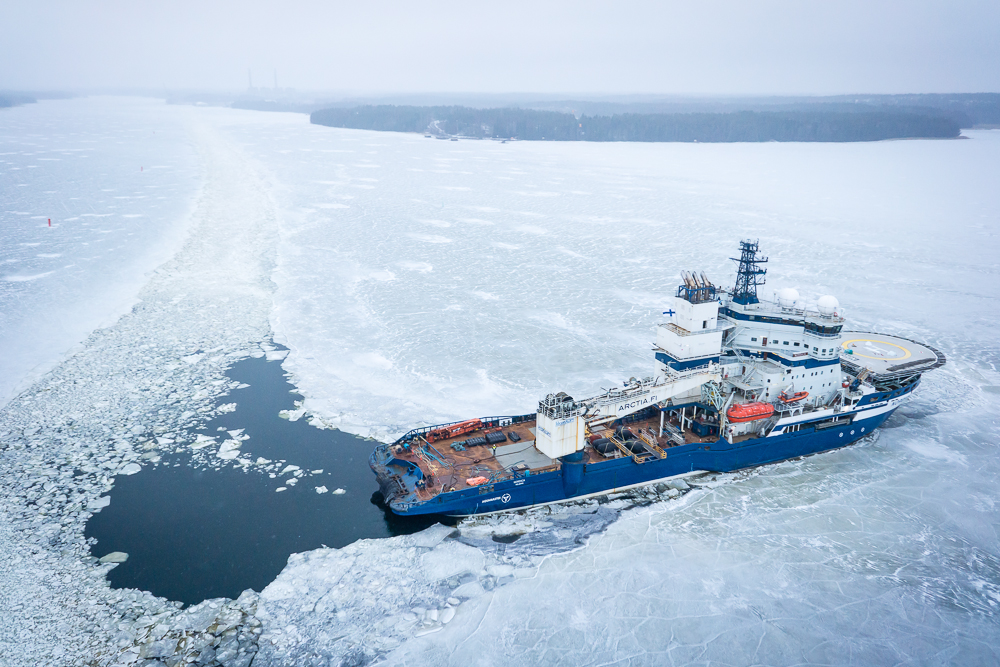Trump calls for an accelerated expansion of the U.S. icebreaker fleet
The U.S. president asked officials to explore the possibility of leasing ships and sourcing them from foreign shipyards to begin the expansion by 2022.

President Donald Trump on Tuesday called for a faster expansion of the U.S. icebreaker fleet than previously planned — including exploring the possibility of arming icebreakers and powering them with nuclear propulsion.
In the memorandum, directed to several U.S. agencies, Trump set a 2029 target for an expanded icebreaker fleet, and directed officials to consider leasing vessels, including from foreign entities, to ensure some new icebreakers could be available by 2022.
The memo focused on national security and commercial activities. It also tasked officials with identifying at least four domestic and international bases for the new fleet.
A report from the agencies — including U.S. Office of Management and Budget, the State Department and the Departments of Energy, Commerce and Homeland Security (which houses the U.S. Coast Guard) — is due within 60 days.
[U.S. Coast Guard announces plans for a third heavy icebreaker]
Sherri Goodman, a senior fellow at the Wilson Center and former U.S. deputy under-secretary of defense, said the document acknowledges “the icebreaker gap” in the U.S. fleet. The memo indicates that expanding the fleet is “a White House priority,” she said. “This is not just the individual agencies working with their congressional sponsors.”
Trump focused on Arctic and Antarctic security, with an occasional nod to scientific research and no mention of the ways climate change is reshaping security in the region.
The two polar-capable icebreakers in the U.S. fleet that remain operational mostly carry out scientific missions. The Healy, a medium icebreaker, is frequently used as a platform for scientific research in the Arctic, while the Polar Star, a heavy icebreaker, conducts the annual break-up and resupply of McMurdo Station in Antarctica.
Notably, the National Science Foundation, which coordinates much of the U.S. polar scientific work, was not among the agencies to whom the memo was addressed.
The Polar Star is now in its 44th year, but its replacement is not expected to hit the water for another decade. Given the heavy icebreaker’s degradation — it caught fire on its way back from Antarctica last year, for instance — replacement vessels may be brought in as early as 2022, Trump said.

The U.S. Coast Guard has discussed plans to add additional vessels to the fleet, but it typically takes years to secure funding, solicit bids, and construct the vessels.
Trump raised the possibility of acquiring icebreakers from domestic and international sources — both to lease in the near-term and to build in foreign shipyards in the longer term — as a way of speeding up the process.
“That had been subject of some debate in the past,” Goodman said.
It’s not clear whether that plan would comply with the Jones Act, which bars passenger and cargo transportation between two U.S. ports on foreign-built ships. It’s often been used to support U.S. shipbuilding of icebreakers.
The memo specifically points to the need to conduct “national and economic security missions” in the Arctic and Antarctica, in addition to scientific research. While there may be potential national security risks in leasing and buying vessels from foreign governments, Goodman points out that the memo specifies working with partner nations.
The memo also asked for a report on capabilities, from unmanned air, sea, and surface systems to maritime domain awareness and intelligence-collection systems — and for an evaluation of what defensive weapons such ships would need “against threats by near-peer competitors.”
The memo does not mention Russia and China by name, but both civilian and military officials in the Trump administration have frequently singled out those nations as strategic rivals to the U.S. in the Arctic.

In addition to the icebreaker fleet, the U.S. would expand “associated assets and resources.” But there was no specific mention of other Arctic infrastructure, like deepwater ports or improved communications.
The memo specifically singled out the potential for icebreakers to conduct commercial activities, like exploring and extracting resources or laying undersea cables.
“Obviously it’s very controversial how much resource exploitation should be done in the Arctic,” Goodman said. “Whether that provides for sustainable Arctic futures is still really an open question.”
The agencies will also identify and assess locations for at least four bases — two in the United States and two abroad.
“That seems to be a nod to Alaska. And then the international basing locations could be with our allies and partners in the high north,” Goodman said, like Norway, Greenland and Iceland.
“They’re partner nations who would welcome the opportunity to be an international base for a U.S. polar security cutter,” she said.
It’s unclear where the budget for this expanded fleet would come from. The memo noted that this should not adversely affect the U.S. Coast Guard’s offshore patrol cutter acquisition program.
[Trump’s 2021 budget includes more funding for icebreakers, other Arctic priorities]
If Trump is interested in leasing icebreakers in 2022, it would need to be included in the budget currently being discussed, Goodman pointed out. “FY22 is only, in budget years, a year away now.”
“Where that comes from, and what’s traded off in that — that’s what’s not yet identified in here,” she said.
Goodman also pointed out other notable gaps in Trump’s memo.
“There’s a lot that’s not in there,” she said. “It’s all about icebreakers, but it’s not about anything else in the Arctic, really.”
“It doesn’t talk about any other infrastructure needs in the Arctic,” she said. “It’s not talking about a deepwater port, it’s not talking about other kinds of communication — non-icebreaker capabilities we need.”